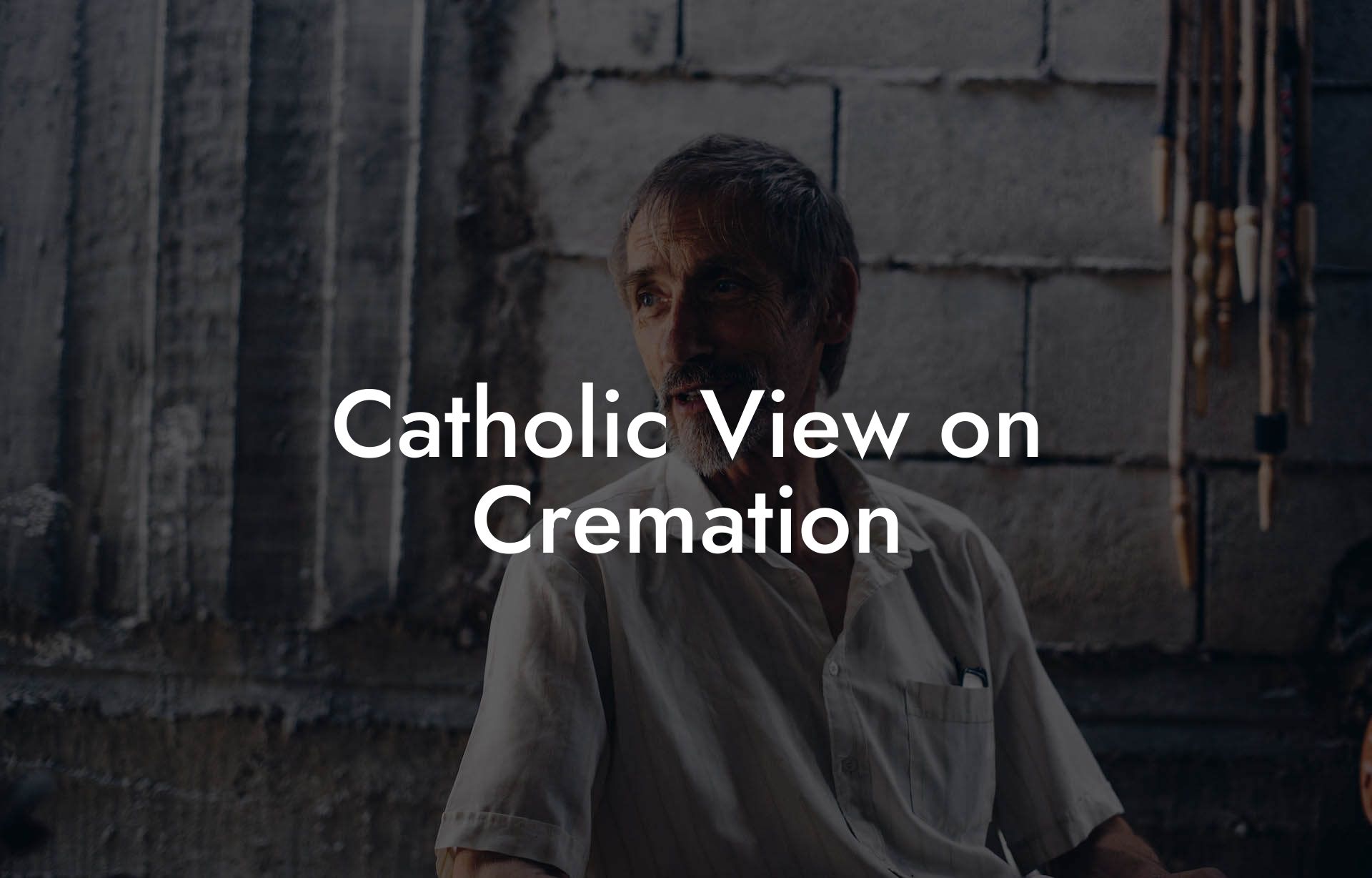Imagine walking into a serene, natural setting, surrounded by loved ones, as you celebrate the life of a dear departed soul. The Catholic Church's stance on cremation has evolved over time, and today, it's more accepting than ever. But what does this mean for you and your family? Let's delve into the Catholic view on cremation, exploring its history, current guidelines, and the possibilities for a meaningful, personalized farewell.
We know how hard that can feel. You are sorting through precious memories, searching for the right words, and trying to hold it together when it is time to speak. It is a lot to carry.
That is why we created a simple step by step eulogy writing guide. It gently walks you through what to include, how to shape your thoughts, and how to feel more prepared when the moment comes. → Find Out More
Quick Links to Useful Sections
A Brief History of Cremation in the Catholic Church
In the early Christian era, cremation was seen as a pagan practice, and the Church discouraged it. However, as the Church grew and evolved, so did its stance on cremation. By the 1960s, the Church began to reconsider its position, and in 1963, the Vatican officially lifted the ban on cremation.
The 1983 Code of Canon Law and the 1997 edition of the Order of Christian Funerals further solidified the Church's acceptance of cremation. Today, the Catholic Church permits cremation, as long as it's not chosen for reasons that deny the resurrection of the body or the Christian faith.
Current Guidelines and Regulations
While the Church permits cremation, there are still guidelines to follow. Here are some key points to consider:
- Respect for the body: The Church emphasizes the importance of treating the deceased body with respect and dignity, even after cremation.
- Proper burial: The ashes should be buried in a sacred place, such as a cemetery or columbarium, rather than scattered or kept at home.
- No division of ashes: The Church discourages dividing the ashes among family members or keeping them in urns at home.
- Funeral Mass: A Funeral Mass can be celebrated with the body present, or, if cremation has already taken place, with the ashes present.
It's essential to consult with a Catholic priest or funeral director to ensure that your cremation plans align with the Church's guidelines.
Personalizing Your Farewell: Catholic Cremation Options
While the Church provides guidelines, there's still room for personalization and creativity in planning a meaningful farewell. Here are some ideas:
- Memorial services: Hold a memorial service or celebration of life, which can include eulogies, music, and other personalized elements.
- Scattering gardens: Many cemeteries offer scattering gardens, where ashes can be buried in a peaceful, natural setting.
- Tree planting: Plant a tree or a memorial garden, symbolizing the cycle of life and the connection to nature.
- Personalized urns: Choose an urn that reflects the personality or interests of the deceased, such as a sports-themed urn or one made from a natural material like wood or bamboo.
By combining the Church's guidelines with your personal preferences, you can create a unique and meaningful farewell that honors your loved one.
Frequently Asked Questions: Catholic Cremation FAQs
Here are some common questions and answers about Catholic cremation:
1. Is cremation allowed in the Catholic Church?
Yes, the Catholic Church permits cremation, as long as it's not chosen for reasons that deny the resurrection of the body or the Christian faith.
2. Can I have a Funeral Mass with cremation?
Yes, a Funeral Mass can be celebrated with the body present, or, if cremation has already taken place, with the ashes present.
3. What should I do with the ashes?
The ashes should be buried in a sacred place, such as a cemetery or columbarium, rather than scattered or kept at home.
4. Can I divide the ashes among family members?
The Church discourages dividing the ashes among family members or keeping them in urns at home.
5. How can I make my farewell more personal?
Consider personalizing your farewell with memorial services, scattering gardens, tree planting, or personalized urns that reflect the personality or interests of the deceased.
Resources and Community Support: Your Next Steps
Planning a funeral or cremation can be overwhelming, but you don't have to navigate it alone. Here are some resources and community support options to consider:
- Catholic funeral homes and cemeteries: Many Catholic funeral homes and cemeteries offer guidance and support in planning a Catholic funeral or cremation.
- Catholic bereavement support groups: Join a Catholic bereavement support group to connect with others who have experienced a loss and find comfort in shared experiences.
- Online resources: Explore online resources, such as the Catholic Funeral and Cemetery Conference, for guidance on Catholic funeral and cremation practices.
Remember, you're not alone in this journey. Reach out to your Catholic community, and let their support guide you through this difficult time.

